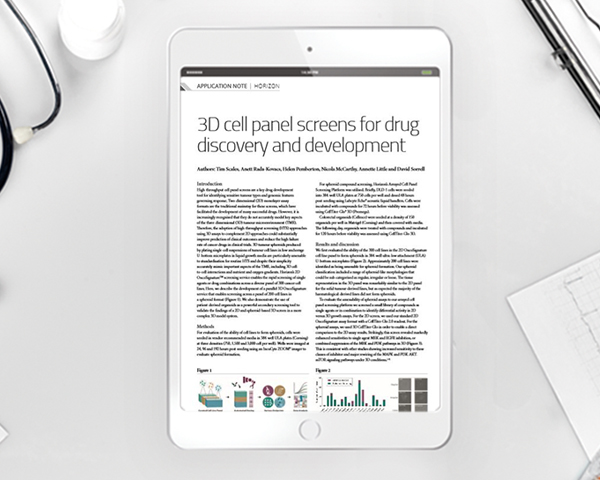Application note: 3D cell panel screens for drug discovery and development
Posted: 11 September 2020 | Horizon Discovery | No comments yet
Horizon Discovery have developed their 3D OncoSignature™ spheroid screening service that consists of a panel of 200 cell lines. In this application note they demonstrate the ability of parallel 2D and 3D OncoSignature primary screens to identify known compounds with enhanced activity under 3D conditions.
High-throughput cell panel screens are a key drug development tool for identifying sensitive tumour types and genomic features governing response. Two-dimensional (2D) monolayer assay formats are the traditional mainstay for these screens, which have facilitated the development of many successful drugs. However, it is increasingly recognised that they do not accurately model key aspects of the three-dimensional (3D) tumour microenvironment (TME). Therefore, the adoption of high-throughput screening (HTS) approaches using 3D assays to complement 2D approaches could substantially improve prediction of clinical outcomes and reduce the high failure rate of cancer drugs in clinical trials. 3D tumour spheroids produced by plating single-cell suspensions of tumour cell lines in low anchorage U-bottom microplates in liquid growth media are particularly amenable to standardisation for routine HTS and despite their simplicity accurately mimic important aspects of the TME, including 3D cellto-cell interactions and nutrient and oxygen gradients.
Related content from this organisation
Related topics
Drug Development, Drug Discovery, High-Throughput Screening (HTS), Screening
Related organisations
Horizon Discovery








